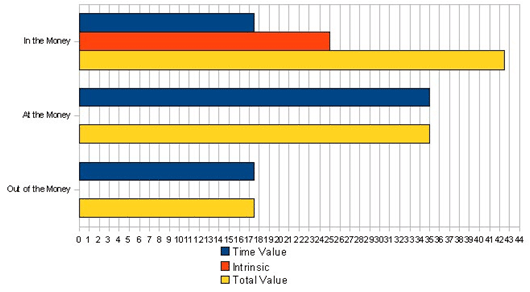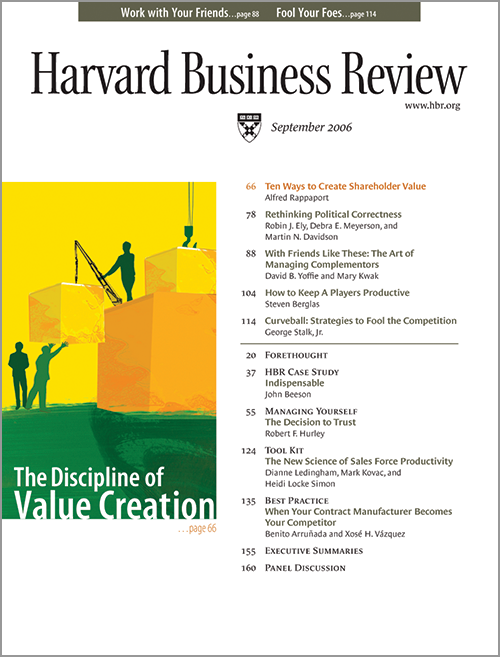How Employee Stock Options Can Influence the Value of Ordinary Shares
Post on: 1 Август, 2015 No Comment

Tallying corporate profits has never been easy, but in the past few years it’s become even harder as accountants, executives and regulators debate how to count the ever growing number of stock options issued to top managers and rank-and-file employees. Most of the debate is over whether options should be counted as an expense, which would reduce reported earnings and possibly undermine share prices.
But there’s another, equally important problem that gets less attention, says Wharton accounting professor Wayne R. Guay. What effect do options have on the number of stock shares a company has in circulation? The answer can make a big difference when a company computes its earnings per share, and when investors calculate the critical price-to-earnings ratio.
“A firm’s equity is not just common stock,” says Guay. “The other big chunk is employee stock options … Most of the debate over stock options has been how to treat stock options as an expense in the numerator of the earnings-per-share (calculation)….but their effect on the denominator has to be fixed as well.”
Guay, John E. Core . professor of accounting at Wharton, and S.P. Kothari, professor of accounting at the Massachusetts Institute of Technology, examined the problem in their paper, The Economic Dilution of Employee Stock Options: Diluted EPS for Valuation and Financial Reporting. The paper was published in The Accounting Review in July 2002, and has special relevance now because regulators such as the Financial Accounting Standards Board are expected to modify options accounting rules next year.
After studying 731 stock options plans at American Corporations, Guay and his colleagues concluded “that the existing FASB treasury-stock method of accounting for the dilutive effects of outstanding options systematically understates the options’ dilutive effects, and thus overstates reported EPS (earnings per share).”
The authors conclude that current accounting rules cause options dilution to be understated by an average of about 50% – that options dilution is really twice what companies say it is. Understating dilution inflates earnings per share, the authors say. We incorporate the time value of the option in our measurement and that’s going to lead to more dilution, says Guay. If investors fail to consider this dilution, then stock prices can be inflated.”
Employee options give their owners the right to buy shares at a set price anytime over a given period. Typically, the purchase price (also called the strike or exercise price) is the stock’s price on the day the options are issued. The right to exercise the options may vest all at once or in stages on the first few anniversaries of the grant. Employee options usually expire if they are not exercised within 10 years.
Options appeal to employees because they can convey great value without requiring that the employee put money at risk, as one does owning actual shares of stock. If the share price rose over 10 years to $100, an option with a $25 exercise price would be worth $75. The employee could exercise the right to buy the shares for $25, then immediately sell them on the open market for $100. If the share price instead fell to $15, the option would be worthless, but the employee would not have lost money. Had he owned real shares, he’d have lost $10 per share.
Sponsored Content:
In 1985, options outstanding on companies’ books – options that had been granted but not yet exercised – equaled 4.6% of the companies’ ordinary shares of common stock. By 1995, that figure had grown to 8.9%, the authors write. Options became even more popular in the late ‘90s and continue to be widely used despite criticism of their role in the soaring executive compensation of the past few years.
The growing use of options has raised a debate about how they should be accounted for. Some advocate carrying them as an expense, arguing options have value and should be considered a compensation cost just like wages and other benefits. Others say that since options don’t involve a transfer of cash out of company coffers, they should not be expensed.
This issue has received a great deal of attention in the past few years, and the FASB expected to issue new rules in 2004 requiring some form of expensing.
But this still leaves the second problem of how to account for options-related dilution of share value, Guay and his colleagues say. Companies have various ways of providing the shares needed to turn over to employees who exercise options. Some companies draw on a reserve of shares that have not yet been in circulation. Others use profits to buy back shares on the open market, using them to build a reserve to meet options exercises.
Either way, when options are exercised the result is that more shares are in circulation, and that reduces, or dilutes, the value of shares previously in investors’ hands.
If a company had one million shares outstanding and employees exercised options to purchase 200,000 shares, there would then be 1.2 million shares outstanding. This would affect earnings per share, which is figured by dividing the company’s total earnings for the period by the number of shares outstanding. If the company earned $1 million, earnings per share would be $1 before the options were exercised, and only 83.3 cents after the exercise. Since a stock’s price is heavily influenced by earnings per share, lower per-share earnings would likely cause the share price to fall.
In practice, the accounting is not as simple as in this example. It’s easy to see the dilution caused by options that are exercised, but what about the options that could be exercised but haven’t been?
Investors have to calculate the potential harm that could be done if options are exercised, but they don’t know when the options will be exercised, if at all. Many options holders wait to exercise until shortly before their options expire, hoping the share price will rise further

Under current accounting rules, this uncertainty is handled in a fairly simple way: by figuring how many shares could be purchased at the current market price if all in-the-money options were exercised. Those are options with a strike price lower than the current market price. If the stock price is $10 and the exercise price is $5, each option could make its owner a $5 profit. That is enough to buy ½ of a share. Hence, each option creates ½ share that is added to the total number of common shares outstanding in order to calculate diluted earnings per share. A company might have one million options outstanding, but count only 500,000 in the diluted earnings per share calculation.
The problem with this approach, the authors say, is that it uses too low a figure for potential options-related profits. That means it understates the number of shares that could be bought with those profits. Hence, the dilution is understated as well.
Since options holders tend to postpone exercising until share prices rise further, the value of an in-the-money option held today is actually greater than the difference between today’s market price and the strike price. For example, if an employee held a $25 option and the share price were $75, the current accounting rules would value the option at $50. But if one offered the employee $50 for the option, he might well refuse to sell because he would prefer to bet that a higher share price would make his option more valuable later. In fact, this is what the typical employee does.
In addition, the FASB method assigns no value to options that could not be exercised at a profit. Those are at-the-money options, where the strike price and market price are the same, and out-of-the-money options, where the strike price is higher than the market price. In fact, if one asked an employee to relinquish one of these options for nothing, he would likely refuse since, even if the option is worthless today, the stock’s price might later rise enough to put the option in the money. “It’s because these options have such a long maturity that they have so much extra value,” Guay says.
To figure just how much value the in-, at-, and out-of-the-money options have to their owners, the authors studied 731 options plans from 1995 to 1997. They concluded that while the FASB approach might, for example, value an option at $50, it might have a real value of $80 or more to its owner.
That means the options-related profits could buy more shares, causing greater dilution when those are added to common shares to figure diluted earnings per share. If the $80 figure were used, earnings per share should be lower and the stock price could therefore fall.
Among all the options plans studied, the authors found that options should increase the number of shares used in the diluted earnings-per-share calculation by 2.96%. The FASB method accounted for only half the dilution – 1.46%. In the most extreme cases, options dilution was about 22%, but the FASB approach put it at only 14.5%.
Guay says he and his colleagues are not wedded to their own options-valuation model, since any approach involves a lot of assumptions about factors like future stock prices and at what point employees will choose to exercise.
But they believe their findings demonstrate that rule makers should go beyond the current debate about whether to count options as an expense. They also should seek a better way of figuring how options undermine the value of ordinary shares.














